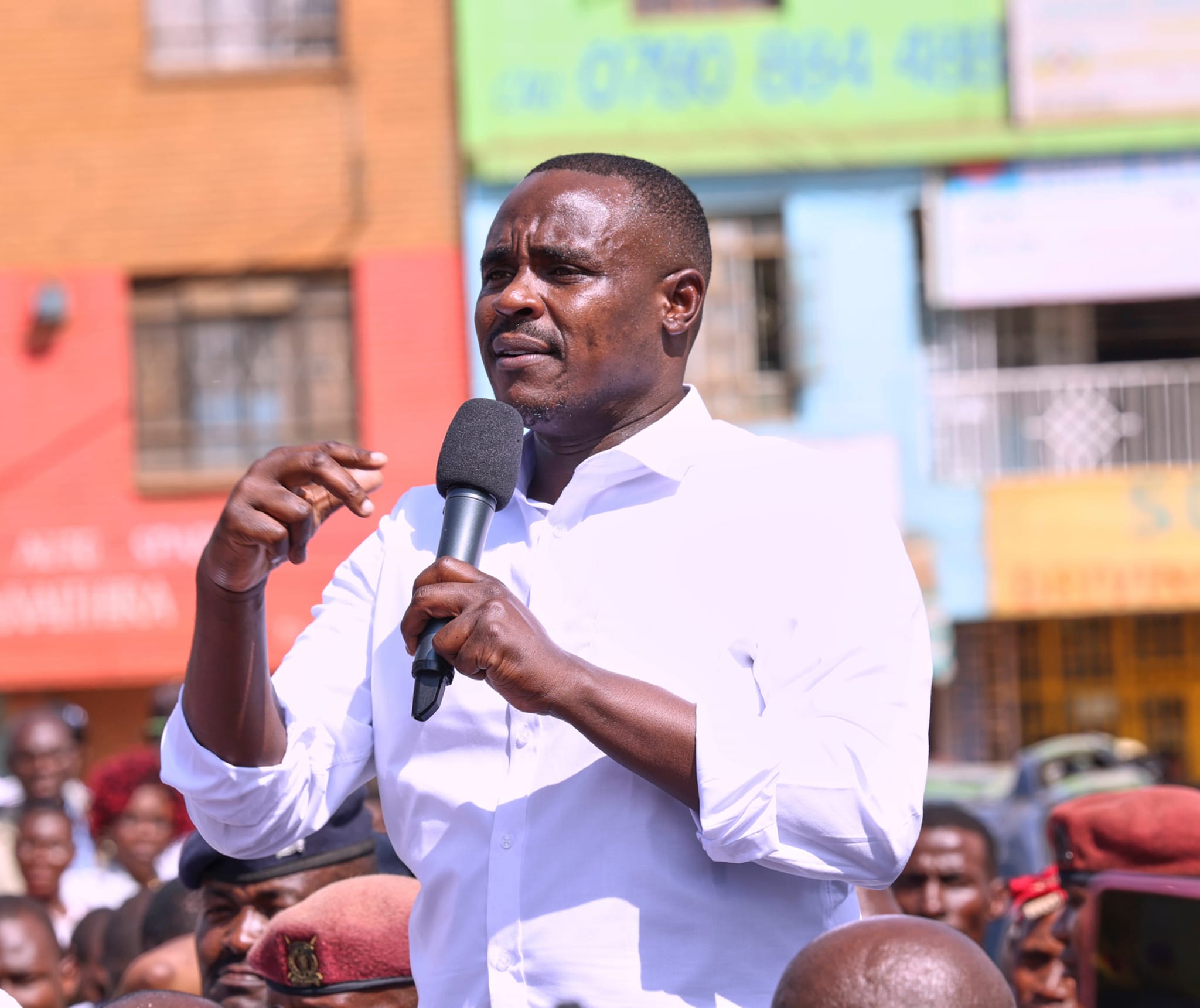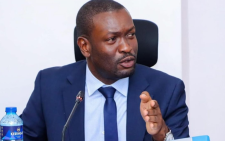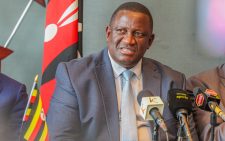Complacency issues raised over police handling of protests

Complicity, poor planning and lack of preparedness within the police service have been blamed for the wanton destruction of property and criminal activities witnessed in the country during the Wednesday Gen-Z demonstrations.
Though there are cases where police officers deployed to a security detail were overwhelmed, serious concerns have been raised following reports of deliberate inaction by the officers who saw hired goons take advantage of the demonstrations to commit acts of robbery and destruction of property.
Preliminary investigations indicate that in other cases, police failed to use justified and lawful force to prevent the commission of crimes, raising questions about possible complicity by state machinery in order to point fingers at the opposition.
In some cases, like in Kikuyu, Karatina, Nyandarua and Nairobi, the goons were organised, and preliminary investigations indicate that police did not do enough to ensure that they did not commit the criminal acts.
In some cases, according to sources, officers escorted the goons as they caused wanton destruction.
Reports indicate that the goons that raided Kikuyu town and even burnt down the Law Courts were ferried in lorries without number plates leaving the National Intelligence Service (NIS), Directorate of Criminal Investigations (DCI) and other security agencies when criminals were having a field day to ferry goons in unmarked cars in broad daylight.
There are also claims that some functionaries in government may have taken advantage of the government’s decision to shut down TV stations in a bid to stop live coverage, to marshal and ferry goons for looting.
It is particularly being questioned why the shops that were targeted for looting were either linked to or belonged to individuals from Mount Kenya who have shown distaste for President Ruto’s government.
“The failure by the government to deploy adequate police officers in parts of Githurai, Ruiru and Limbo-where goons spent more than five hours breaking into shops, is begging questions,” one senior security officer posed.
Police headquarters had claimed that the goons were hired by some politicians, but that begs the question: What did the police do to stop these attacks?
On Thursday, June 26, 2025, Interior Cabinet Secretary Kipchumba Murkomen described the protests as “terrorism disguised as dissent” and an “unconstitutional attempt” to change the government.
Kipchumba Murkomen thanked security agencies for their “remarkable restraint amid extreme provocation”, crediting them with helping to “foil an attempted coup”.
And yesterday, President William Ruto directed the Inspector General of Police, Douglas Kanja, to commence investigations into the violence and destruction of property that he blamed on goons brought in by some politicians he did not name.
While addressing the World Micro, Small, and Medium Enterprises (MSME) Day event, Ruto said the Wednesday hooliganism was a well-coordinated effort to destabilise the country.
He described the demonstrations as “calculated chaos” and “economic sabotage” aimed at disrupting Kenya’s progress and seizing power unlawfully.
“Power can only be taken through elections. The Constitution already provides for term limits. This is the time to focus on building Kenya. Those calling for my removal should come up with better policies that seek to create jobs, not destroy the country,” he said.
Ruto further warned against the destabilising effects of violence, adding that “violence and anarchy will not help anyone,” and stressing that Kenya’s development should be prioritised over political power struggles.
The President reiterated Murkomen’s earlier warning that the government would deal firmly with members of the opposition for planning, financing, mobilising and executing the anarchy.
“To the political actors, the wheels of justice will find you and deal with you decisively,” he warned.
He implored those seeking power to do so through democratic means, stating: “For those who want power, the Constitution is clear—elections will come. Formulate a better plan, convince the people of Kenya, and win fairly. That is how change happens.”
DP Kithure Kindiki warned that the government would in the future deal with planners of such mayhem the same way it does with terrorists.
“To the planners of anarchy and violence, we will never again wait for you to execute your heinous acts. We will deal with you the same way we deal with terrorists. We will handle you at the source before you implement your plans to destabilise the Country,” he said.
Prof Kindiki went on to warn: “We will treat planners, organisers and financiers of violent protests the same way we treat terrorists and other organised gangs.”
But even as the government has heightened the push for a narrative to lay blame on the opposition, particularly former DP Rigathi Gachagua, security experts are questioning the state’s role—or lack thereof—in the tragic events.
Several video footage from the day of the unrest has shown certain police officers appearing to be standing by while protestors clashed with rival groups or looted property, fuelling further suspicions of complicity, with some accusing certain factions within the government of orchestrating the violence to destabilize the political climate or justify an upcoming crackdown on dissent.
The protesters who were not peaceful proceeded and burnt the Kikuyu Law Courts and the Kikuyu County Government offices. The rioters also torched the whole DCC’s office and tried to gain entry into the Sub-County Administration Police armoury and attempted to steal the firearms.
A total of five officers were seriously injured, while one person was shot dead.
The rioters later stormed the Dagoretti police post, set fire to the police post premises, officers’ houses and several motor vehicles.
Police also reported that five firearms were stolen during the raid. They include two AK-47 rifles, a G3 rifle, a Jericho pistol and one anti-riot gun.
The incidents, which led to about 20 deaths and destruction of property worth hundreds of millions, have put not only the service but also other state security organs on the spot.
Under Section 24 of the National Police Service, some of the key functions of the Kenya Police Service include provision of assistance to the public when in need, maintenance of law and order, and protection of life and property.
Sections 27 and 35 of the same Act also clearly define the roles of both the Administration Police Service (APS) and the Directorate of Criminal Investigations (DCI), respectively.
Concerns have also been raised on the daring nature of the attacks, where the unarmed protesters attack even police stations and government offices without
The demonstrators attempted to attack at least ten police stations, including Villa, Karatina, Othaya, Molo, and Embakasi police stations. The worst destruction was reported in Olkalou, Nyandarua County, where 33 motor vehicles, one tractor, 10 motor cycles and several buildings were burnt by the demonstrators, including the exhibit store.
The push and push between the government and opposition over the violence continued with group of lawmakers allied to opposition leaders Kalonzo Musyoka and Gachagua calling on Murkomen to resign over the controversial “shoot to kill” orders given to the police.
The MPs also reiterated to President William Ruto that they have no intention of seizing power unlawfully and are prepared to wait for the 2027 General Election.
During a press conference on June 26, 2025, the MPs, including Robert Mbui (Kathiani), Kamande Mwafrika (Royasambu), Wanjiku Muhia (Kipipiri), Jane Kihara (Naivasha), Senator Joe Nyutu (Murang’a), and Senator Daniel Maanza (Makueni), demanded accountability for the violence that ensued during the protests, specifically pointing fingers at those in the Kenya Kwanza government who they claim were responsible for inciting violence.
The MPs cited statements made by a sitting governor, an MP from the Rift Valley region, and another from South Nyanza, all of whom were quoted as threatening to take harsh measures against demonstrators.
They also cited Kenya Kwanza’s Chairperson of the President’s Council of Economic Advisors, who allegedly warned demonstrators to say their goodbyes before heading out to protest
Wanjiku Muhia called out Murkomen for his “shoot to kill” orders, criticising him for fuelling the violence.
“Ruto, no one is interested in taking over power through the backdoor. This government will be removed through constitutional means. I also want to say that no one is interested in that seat for the next two years. Continue being in power, but allow Gen Z to demonstrate,” Muhia said.
Robert Mbui also condemned Parliament’s focus on the destruction of property during the debate, highlighting the lack of attention to the loss of lives, claiming that the true intention of the motion in Parliament was to tarnish the reputations of leaders who did not align with the broad-based government.
“If you do not listen to the highly educated and disenfranchised youth and continue using force to silence them, how will you address their concerns?” Mbui questioned, calling for action to tackle the underlying social and economic issues.
Daniel Maanza said the opposition had no intention of seizing power through unconstitutional means and was ready for the 2027 elections.
“What Kenyans are doing is preparing to register as voters. No one is interested in taking over power through the backdoor,” he said.
Senator Joe Nyutu also expressed disapproval over the profiling of Mount Kenya as the region behind the violence that occurred on June 25, 2025.
“Murkomen displayed his arrogance yesterday, yet we saw the destruction of property that happened,” Nyutu said.
Kamande Mwafrika also accused the government of deliberately deploying police forces selectively, particularly in Mount Kenya.
He claimed that police were instructed to stay away from certain areas, allowing goons to loot and destroy property for hours without intervention.
“Goons took more than five hours to break into a building. They had time because deployment of officers was done selectively,” Mwafrika revealed, adding that Githurai was one of the areas left unprotected.












